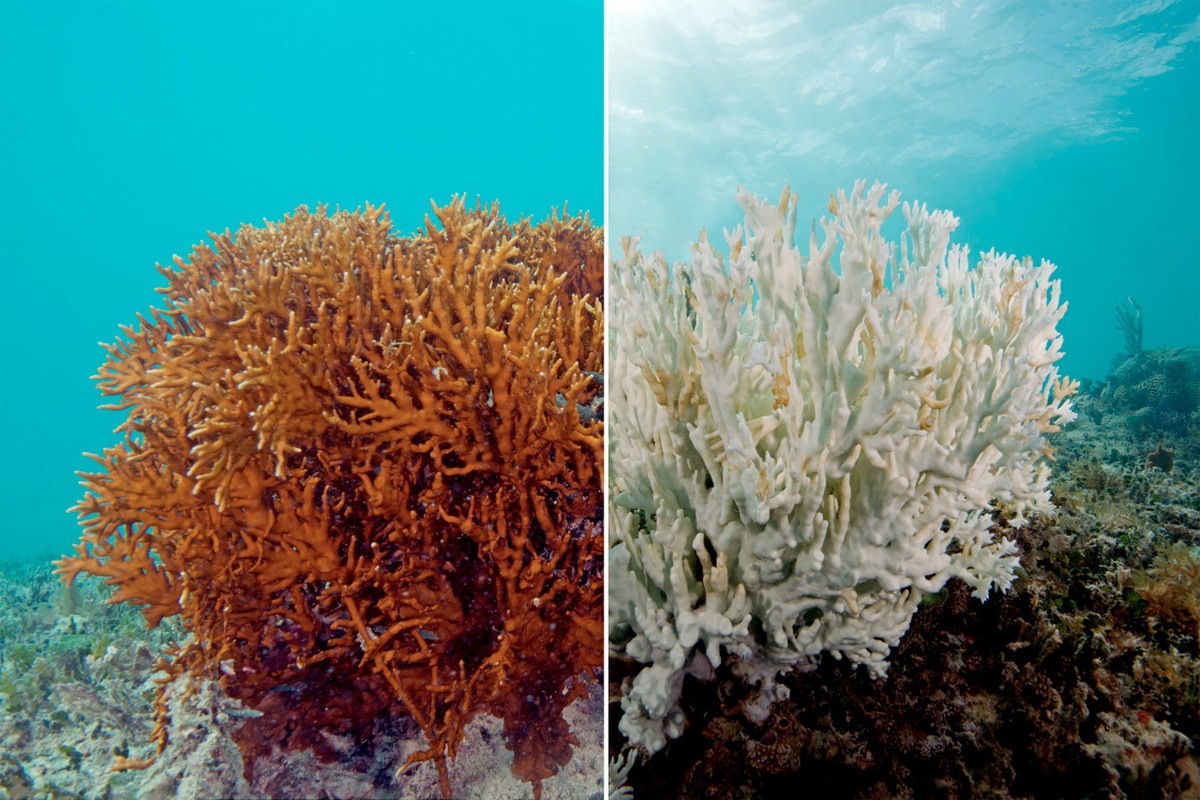The phenomenon of coral bleaching
- The management authority of Australia’s Great Barrier Reef, confirmed that the reef is experiencing a mass coral bleaching event.
- This is the sixth time that the coral reef system is being hit by a widespread and damaging bleaching event and the fourth time in six years that such an event has occurred.
What are coral reefs?
- Corals are marine invertebrates or animals not possessing a spine.
- Each coral is called a polyp and thousands of such polyps live together to form a colony, which grows when polyps multiply to make copies of themselves.
- Type: hard coral and soft coral.
- Hard corals, also called hermatypic or ‘reef building’ corals extract calcium carbonate (also found in limestone) from the seawater to build hard, white coral exoskeletons.
- Soft coral polyps borrow their appearance from plants, attach themselves to such skeletons and older skeletons built by their ancestors.
- Soft corals also add their own skeletons to the hard structure over the years and these growing multiplying structures gradually form coral reefs.
- They are the largest living structures on the planet.
- Corals share a symbiotic relationship with single-celled algae called zooxanthellae.
- It provides the coral with food and nutrients, which they make through photosynthesis, using the sun’s light.
- In turn, the corals give the algae a home and key nutrients.
- The zooxanthellae also give corals their bright colour.
- Australia’s Great Barrier Reef is the world’s largest reef system stretching across 2,300 km.
- It hosts 400 different types of coral, gives shelter to 1,500 species of fish and 4,000 types of mollusc.
What is coral bleaching?
- Bleaching happens when corals experience stress in their environment due to changes in temperature, pollution or high levels of ocean acidity.
- Under such conditions, zooxanthellae or food-producing algae living inside coral polyps start producing reactive oxygen species, which are not beneficial to the corals.
- So, the corals expel the colour-giving zooxanthellae from their polyps, which exposes their pale white exoskeleton, giving the corals a bleached appearance.
- This also ends the symbiotic relationship that helps the corals to survive and grow.
- Bleached corals can survive depending on the levels of bleaching and the recovery of sea temperatures to normal levels.
- If heat pollutions subside in time the zooxanthellae can come back to the corals and restart the partnership but severe bleaching and prolonged stress in the external environment can lead to coral death.
- Over the last couple of decades, climate change and increased global warming have made seas warmer than usual.
- A 2021 study by the Global Coral Reef Monitoring Network (GCRMN showed that 14% of the world's coral reefs had been lost between 2009 and 2018, with most of the loss attributed to coral bleaching.
Why does it matter?
- Coral reefs support over 25% of marine biodiversity, including fish, turtles and lobsters; even though they only take up 1% of the seafloor.
- The marine life supported by reefs further helps global fishing industries.
- Even giant clams and whales depend on the reefs to live.
- Coral reef systems generate $2.7 trillion in annual economic value through goods and service trade and tourism.
- It also provides protection from storm waves.
- Dead reefs can revive over time if there are enough fish species that can graze off the weeds that settle on dead corals, but it takes almost a decade for the reef to start setting up again.
- The reefs which were severely damaged in 1998 did recover over time.
- The current condition of the Great Barrier Reef
- The UN IPCC in its report warned that the life of the Great Barrier is in grave danger.
- It said: if temperatures continue to rise, bleaching events may occur more often and a large proportion of the remaining reef cover in Australia could be lost.
- Its the first time that the bleaching event has occurred during a La Niña weather pattern, when warm areas in the pacific ocean shift, giving more cloud cover, rain and creating cooler weather conditions over the reef.
- Bleached reefs are affected at different levels from mild to severe, and while stressed, they are alive and could recover if temperatures moderate.
- Last year Australian PM had managed to convince UNESCO to not list the Great Barrier Reef as being in danger.
- In 2015, when UNESCO had threatened to downgrade the Barrier Reef’s World Heritage Listing, Australia created a "Reef 2050"plan, putting billions of dollars into protecting it.


